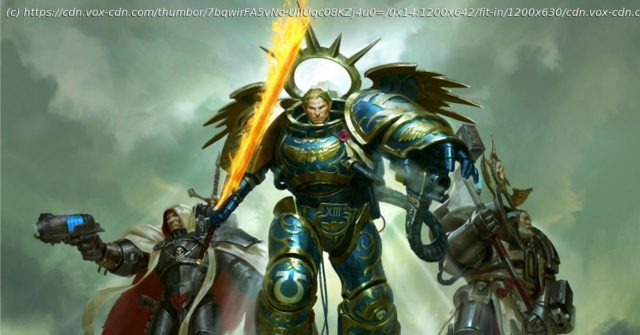Warhammer 40,000’s massive universe of lore has undergone some big changes with the 2018 Dark Imperium event, which tore the galaxy in two with the Cicatrix Maledictum. What’s the current status quo?
The Warhammer 40,000 universe is nearly incomprehensibly vast, with 40 years of canon spread across game books, novels, animated shorts, in-universe documents, and video games. There isn’t any one narrative; instead, this truly is a galaxy full of protagonists with their own stories, most of which are cut short when someone is eaten by a space bug, kidnapped by a sadistic space elf, or is corrupted by the extradimensional forces of Chaos.
In recent years, some very interesting plot developments have unfolded. The God-Emperor, his Primarch sons, and other key characters are starting to emerge from stasis. The galaxy is now cracked in half, a Chaotic maelstrom ripping across the stars. The Imperium is under new management, with a very stressed and sad man named Roboute Guilliman taking the helm. The God-Emperor has even rallied enough strength to burn the gardens of Nurgle, a Chaos God of rot and decay. What inspired all of this change, and what does it mean for the 40K setting?
If there’s anything approaching a main character in 40K, the closest thing would be the Emperor of Mankind. He is a carrion lord upon a golden throne, a rotting carcass that is barely kept alive by faith, ancient technology, constant human sacrifices, and sheer willpower. The Emperor, despite being a secularist in his time, is worshiped as a god by the vast Imperium of Man who rules the stars. If the Emperor fails, mankind fails along with him, as he powers the cosmic lighthouse that lets ships navigate the stars. He can only communicate with humanity fleetingly, through tarot readings and visions.
A common bit of boilerplate text, often published as a foreword in most 40K novels, describes the setting as such:
To be a man in such times is to be one amongst untold billions. It is to live in the cruelest and most bloody regime imaginable. These are the tales of those times.






